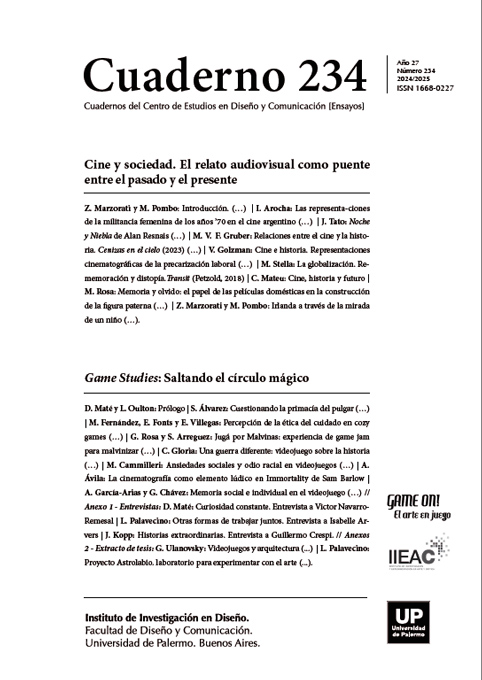La cinematografía como elemento lúdico en Immortality de Sam Barlow
Abstract
Video games are intermediate objects in which different languages operate with the capacity to transmit ideas.
References
Bazin, A. (2008). ¿Qué es el cine? Rialp.
Bogost, I. (2010). Persuasive Games: The Expressive Power of Videogames. MIT Press.
Bogost, I. (25 de abril de 2017). Video Games Are Better Without Stories. The Atlantic. https://www.theatlantic.com/technology/archive/2017/04/video-games-stories/524148/
Deren, M., & Martínez, C. (2020). El universo dereniano: Textos fundamentales de la cineasta Maya Deren. Unión de Editoriales Universitarias Española.
Eisenstein, S. (1999). La forma del cine. Siglo XXI.
Furstenau, M. (2010). The Film Theory Reader. Routledge.
Ahl, D. H. (2008). Mainframe Games and Simulations. M. J. P. Wolf (Ed.) The Video Game Explosion: A History from Pong to Playstation and Beyond.Greenwood Press. 31-34.
Hancock, H. (2002). Better Game Design Through Cutscenes. Game Developer. https://www.gamedeveloper.com/design/better-game-design-through-cutscenes
Huizinga, J. (2015). Homo Ludens. Alianza.
Pérez Latorre, Ó. (2012). El lenguaje videolúdico. Laertes.
Willaert, K. (2019). The Sumerian Game: The Most Important Video Game You’ve Never Heard of. Acriticalhit! https://www.acriticalhit.com/sumerian-game-most-importantvideo-game-youve-never-heard/
“Immortality”. (2022). Edge, October, 109.
“Post Script”. (2022). Edge, October, pp. 106-108.
Los autores/as que publiquen en esta revista ceden los derechos de autor y de publicación a "Cuadernos del Centro de Estudios de Diseño y Comunicación", Aceptando el registro de su trabajo bajo una licencia de atribución de Creative Commons, que permite a terceros utilizar lo publicado siempre que de el crédito pertinente a los autores y a esta revista.


